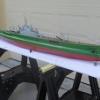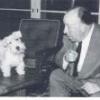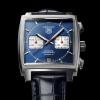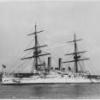-
Posts
4,520 -
Joined
-
Last visited
Reputation Activity
-
 Blue Ensign got a reaction from Hennie in Sovereign of the Seas by Tallshiptragic - Sergal - 1/78
Blue Ensign got a reaction from Hennie in Sovereign of the Seas by Tallshiptragic - Sergal - 1/78
That is quite some build you've taken on there Anton, great job on the gunports, a tricky job that gives me the yips just thinking about it.
Well done
B.E.
-
 Blue Ensign reacted to rafine in Halifax by rafine - FINISHED - The Lumberyard - 1:48 - semi-scratch schooner
Blue Ensign reacted to rafine in Halifax by rafine - FINISHED - The Lumberyard - 1:48 - semi-scratch schooner
Thanks so much Albert, B.E. and the "likes".
Why do the frames B.E., if you're not going to let them show.
Bob
-
 Blue Ensign got a reaction from EricWilliamMarshall in 18TH c. English Pinnace by Blue Ensign - FINISHED - Model Shipways - 1:24 scale
Blue Ensign got a reaction from EricWilliamMarshall in 18TH c. English Pinnace by Blue Ensign - FINISHED - Model Shipways - 1:24 scale
That fairing business.
The temporary bracing I have employed is keeping the frames rock solid for fairing.
Early check reveals that several b/hds needed shims to give a fair run along the hull. A little surprised by this but some 0.6mm boxwood strip sorts the job out.
In total I have shimmed two on the portside and four on larboard, but now along the sheer at least there is a fair run.
Not one of my favourite pastimes fairing, seems to take forever, even on a small project such as this, just when you think you have it right another hollow reveals itself.
6941
Not first planking but a boxwood strip to check out the fairing at sheer line level.
6938
one of the benefits of the notched bracing strips is that it provides an anchor for the clamps.
6942
Speaking of boxwood I do have a good supply of Boxwood strip 4.50mm x 0.6mm plus several other wider sizes.
The kit provides Limewood strip for the outer planking 3/16" x 1/32" (4.76mm x 0.79mm) In practice the thickness is closer to 0.70mm =0.66"
My 0.6mm boxwood strips at 1:24 scale = 0.57" a tad finer than the kit provided stuff.
Limewood is a very soft wood normally used for first planking on double planked hull and I'm a little concerned about dinks and getting a smooth finish.
So the question is should I go with the limewood or would the slightly thinner Boxwood be ok. Hmmn something to ponder.
According to Steel, the timbers for a 21' Pinnace are 1½" thick equiv to 1.59mm at 1:24 scale.
Back to fairing for the moment.
B.E.
-
 Blue Ensign reacted to rafine in Halifax by rafine - FINISHED - The Lumberyard - 1:48 - semi-scratch schooner
Blue Ensign reacted to rafine in Halifax by rafine - FINISHED - The Lumberyard - 1:48 - semi-scratch schooner
With completion of the framing, it was time to make some decisions. First, I decided that I would leave the hull below the wales unplanked, except for a single strake of holly directly below the wale. Second, the hull above the wales would be fully planked on both sides. Third, I would leave fairing of the interior hull until I have completed the hull planking and have cut the hull from the framing jig.
Having made these decisions, it was time to begin the planking process. The first item was the wales. Since they were to be painted black, I chose to use holly which is easier to bend than boxwood, and made them in two layers, again for ease of bending and fitting. When they were in place, I painted them using multiple coats of ModelMaster engine black (the former Pollyscale).
Next, I planked the stern counter and the lower portion of the transom. This was done with boxwood and was treenailed using the drill and fill method (which I intend to use for all of the treenailing). I trimmed back the wales to meet the counter planking. I still need to add moldings, finish the counter planking with Wipe-on poly and paint the wale ends black. This will be done later, as will the remaining stern transom work.
Bob
-
 Blue Ensign got a reaction from Piet in HMS Agamemnon 1781 by Hennie - FINISHED - Caldercraft - Scale 1:64
Blue Ensign got a reaction from Piet in HMS Agamemnon 1781 by Hennie - FINISHED - Caldercraft - Scale 1:64
Great result Hennie, a fine model completed, and she looks so good displayed on your sideboard.
Models look so much better to my eye when uncased, but present a major cleaning problem for these large square riggers.
Well done
B.E.
-
 Blue Ensign got a reaction from riverboat in 18TH c. English Pinnace by Blue Ensign - FINISHED - Model Shipways - 1:24 scale
Blue Ensign got a reaction from riverboat in 18TH c. English Pinnace by Blue Ensign - FINISHED - Model Shipways - 1:24 scale
That fairing business.
The temporary bracing I have employed is keeping the frames rock solid for fairing.
Early check reveals that several b/hds needed shims to give a fair run along the hull. A little surprised by this but some 0.6mm boxwood strip sorts the job out.
In total I have shimmed two on the portside and four on larboard, but now along the sheer at least there is a fair run.
Not one of my favourite pastimes fairing, seems to take forever, even on a small project such as this, just when you think you have it right another hollow reveals itself.
6941
Not first planking but a boxwood strip to check out the fairing at sheer line level.
6938
one of the benefits of the notched bracing strips is that it provides an anchor for the clamps.
6942
Speaking of boxwood I do have a good supply of Boxwood strip 4.50mm x 0.6mm plus several other wider sizes.
The kit provides Limewood strip for the outer planking 3/16" x 1/32" (4.76mm x 0.79mm) In practice the thickness is closer to 0.70mm =0.66"
My 0.6mm boxwood strips at 1:24 scale = 0.57" a tad finer than the kit provided stuff.
Limewood is a very soft wood normally used for first planking on double planked hull and I'm a little concerned about dinks and getting a smooth finish.
So the question is should I go with the limewood or would the slightly thinner Boxwood be ok. Hmmn something to ponder.
According to Steel, the timbers for a 21' Pinnace are 1½" thick equiv to 1.59mm at 1:24 scale.
Back to fairing for the moment.
B.E.
-
 Blue Ensign got a reaction from Heronguy in 18TH c. English Pinnace by Blue Ensign - FINISHED - Model Shipways - 1:24 scale
Blue Ensign got a reaction from Heronguy in 18TH c. English Pinnace by Blue Ensign - FINISHED - Model Shipways - 1:24 scale
That fairing business.
The temporary bracing I have employed is keeping the frames rock solid for fairing.
Early check reveals that several b/hds needed shims to give a fair run along the hull. A little surprised by this but some 0.6mm boxwood strip sorts the job out.
In total I have shimmed two on the portside and four on larboard, but now along the sheer at least there is a fair run.
Not one of my favourite pastimes fairing, seems to take forever, even on a small project such as this, just when you think you have it right another hollow reveals itself.
6941
Not first planking but a boxwood strip to check out the fairing at sheer line level.
6938
one of the benefits of the notched bracing strips is that it provides an anchor for the clamps.
6942
Speaking of boxwood I do have a good supply of Boxwood strip 4.50mm x 0.6mm plus several other wider sizes.
The kit provides Limewood strip for the outer planking 3/16" x 1/32" (4.76mm x 0.79mm) In practice the thickness is closer to 0.70mm =0.66"
My 0.6mm boxwood strips at 1:24 scale = 0.57" a tad finer than the kit provided stuff.
Limewood is a very soft wood normally used for first planking on double planked hull and I'm a little concerned about dinks and getting a smooth finish.
So the question is should I go with the limewood or would the slightly thinner Boxwood be ok. Hmmn something to ponder.
According to Steel, the timbers for a 21' Pinnace are 1½" thick equiv to 1.59mm at 1:24 scale.
Back to fairing for the moment.
B.E.
-
 Blue Ensign got a reaction from Dubz in 18TH c. English Pinnace by Blue Ensign - FINISHED - Model Shipways - 1:24 scale
Blue Ensign got a reaction from Dubz in 18TH c. English Pinnace by Blue Ensign - FINISHED - Model Shipways - 1:24 scale
That fairing business.
The temporary bracing I have employed is keeping the frames rock solid for fairing.
Early check reveals that several b/hds needed shims to give a fair run along the hull. A little surprised by this but some 0.6mm boxwood strip sorts the job out.
In total I have shimmed two on the portside and four on larboard, but now along the sheer at least there is a fair run.
Not one of my favourite pastimes fairing, seems to take forever, even on a small project such as this, just when you think you have it right another hollow reveals itself.
6941
Not first planking but a boxwood strip to check out the fairing at sheer line level.
6938
one of the benefits of the notched bracing strips is that it provides an anchor for the clamps.
6942
Speaking of boxwood I do have a good supply of Boxwood strip 4.50mm x 0.6mm plus several other wider sizes.
The kit provides Limewood strip for the outer planking 3/16" x 1/32" (4.76mm x 0.79mm) In practice the thickness is closer to 0.70mm =0.66"
My 0.6mm boxwood strips at 1:24 scale = 0.57" a tad finer than the kit provided stuff.
Limewood is a very soft wood normally used for first planking on double planked hull and I'm a little concerned about dinks and getting a smooth finish.
So the question is should I go with the limewood or would the slightly thinner Boxwood be ok. Hmmn something to ponder.
According to Steel, the timbers for a 21' Pinnace are 1½" thick equiv to 1.59mm at 1:24 scale.
Back to fairing for the moment.
B.E.
-
 Blue Ensign got a reaction from EricWilliamMarshall in 18TH c. English Pinnace by Blue Ensign - FINISHED - Model Shipways - 1:24 scale
Blue Ensign got a reaction from EricWilliamMarshall in 18TH c. English Pinnace by Blue Ensign - FINISHED - Model Shipways - 1:24 scale
Before I start fairing the bulkheads I need to consider their relative fragility and to this end two broad strips of beech are glued along the tops of the frames to stiffen the bulkheads against the sanding process.
6831
6829
and two notched strips either side, I'm a Belt and braces sort of guy.
6887
I have also at this stage added the filler pieces at the bow.
(although four pieces are provided in the kit Chuck has confirmed to me that only one each side is required.)
6894
Atop the Beech strips is a Walnut block which will be used to hold the boat when inverted in a vice. This is secured with double sided tape to allow for easier removal.
6893
So now ready to start the fairing process.
B.E.
-
 Blue Ensign got a reaction from Martin W in 18TH c. English Pinnace by Blue Ensign - FINISHED - Model Shipways - 1:24 scale
Blue Ensign got a reaction from Martin W in 18TH c. English Pinnace by Blue Ensign - FINISHED - Model Shipways - 1:24 scale
That fairing business.
The temporary bracing I have employed is keeping the frames rock solid for fairing.
Early check reveals that several b/hds needed shims to give a fair run along the hull. A little surprised by this but some 0.6mm boxwood strip sorts the job out.
In total I have shimmed two on the portside and four on larboard, but now along the sheer at least there is a fair run.
Not one of my favourite pastimes fairing, seems to take forever, even on a small project such as this, just when you think you have it right another hollow reveals itself.
6941
Not first planking but a boxwood strip to check out the fairing at sheer line level.
6938
one of the benefits of the notched bracing strips is that it provides an anchor for the clamps.
6942
Speaking of boxwood I do have a good supply of Boxwood strip 4.50mm x 0.6mm plus several other wider sizes.
The kit provides Limewood strip for the outer planking 3/16" x 1/32" (4.76mm x 0.79mm) In practice the thickness is closer to 0.70mm =0.66"
My 0.6mm boxwood strips at 1:24 scale = 0.57" a tad finer than the kit provided stuff.
Limewood is a very soft wood normally used for first planking on double planked hull and I'm a little concerned about dinks and getting a smooth finish.
So the question is should I go with the limewood or would the slightly thinner Boxwood be ok. Hmmn something to ponder.
According to Steel, the timbers for a 21' Pinnace are 1½" thick equiv to 1.59mm at 1:24 scale.
Back to fairing for the moment.
B.E.
-
 Blue Ensign got a reaction from realworkingsailor in 18TH c. English Pinnace by Blue Ensign - FINISHED - Model Shipways - 1:24 scale
Blue Ensign got a reaction from realworkingsailor in 18TH c. English Pinnace by Blue Ensign - FINISHED - Model Shipways - 1:24 scale
That fairing business.
The temporary bracing I have employed is keeping the frames rock solid for fairing.
Early check reveals that several b/hds needed shims to give a fair run along the hull. A little surprised by this but some 0.6mm boxwood strip sorts the job out.
In total I have shimmed two on the portside and four on larboard, but now along the sheer at least there is a fair run.
Not one of my favourite pastimes fairing, seems to take forever, even on a small project such as this, just when you think you have it right another hollow reveals itself.
6941
Not first planking but a boxwood strip to check out the fairing at sheer line level.
6938
one of the benefits of the notched bracing strips is that it provides an anchor for the clamps.
6942
Speaking of boxwood I do have a good supply of Boxwood strip 4.50mm x 0.6mm plus several other wider sizes.
The kit provides Limewood strip for the outer planking 3/16" x 1/32" (4.76mm x 0.79mm) In practice the thickness is closer to 0.70mm =0.66"
My 0.6mm boxwood strips at 1:24 scale = 0.57" a tad finer than the kit provided stuff.
Limewood is a very soft wood normally used for first planking on double planked hull and I'm a little concerned about dinks and getting a smooth finish.
So the question is should I go with the limewood or would the slightly thinner Boxwood be ok. Hmmn something to ponder.
According to Steel, the timbers for a 21' Pinnace are 1½" thick equiv to 1.59mm at 1:24 scale.
Back to fairing for the moment.
B.E.
-
 Blue Ensign got a reaction from mtaylor in PAMIR 1905 by Mirabell61 - FINISHED - 1:96 - four-masted barque as she appeared since 1951/1952
Blue Ensign got a reaction from mtaylor in PAMIR 1905 by Mirabell61 - FINISHED - 1:96 - four-masted barque as she appeared since 1951/1952
Great to have a reminder of this superb model Nils.
B.E.
-
 Blue Ensign got a reaction from Canute in HMVS Cerberus 1870 by Dan Vadas - FINISHED - Paper Shipwright - 1:250 - CARD
Blue Ensign got a reaction from Canute in HMVS Cerberus 1870 by Dan Vadas - FINISHED - Paper Shipwright - 1:250 - CARD
An interesting project Danny of a not very well represented era in ship modelling terms.
Look forward to seeing her develop.
Cheers,
B.E.
-
 Blue Ensign got a reaction from Captain Slog in HMVS Cerberus 1870 by Dan Vadas - FINISHED - Paper Shipwright - 1:250 - CARD
Blue Ensign got a reaction from Captain Slog in HMVS Cerberus 1870 by Dan Vadas - FINISHED - Paper Shipwright - 1:250 - CARD
An interesting project Danny of a not very well represented era in ship modelling terms.
Look forward to seeing her develop.
Cheers,
B.E.
-
 Blue Ensign got a reaction from Eddie in HMVS Cerberus 1870 by Dan Vadas - FINISHED - Paper Shipwright - 1:250 - CARD
Blue Ensign got a reaction from Eddie in HMVS Cerberus 1870 by Dan Vadas - FINISHED - Paper Shipwright - 1:250 - CARD
An interesting project Danny of a not very well represented era in ship modelling terms.
Look forward to seeing her develop.
Cheers,
B.E.
-
 Blue Ensign reacted to MEDDO in 18TH c. English Pinnace by Blue Ensign - FINISHED - Model Shipways - 1:24 scale
Blue Ensign reacted to MEDDO in 18TH c. English Pinnace by Blue Ensign - FINISHED - Model Shipways - 1:24 scale
Seeing as how so many people have had trouble with the frames breaking off during fairing this looks like a very nice solution. Nice that it doesn't require some complex milling equipment or saw or something.
-
 Blue Ensign reacted to Mirabell61 in 18TH c. English Pinnace by Blue Ensign - FINISHED - Model Shipways - 1:24 scale
Blue Ensign reacted to Mirabell61 in 18TH c. English Pinnace by Blue Ensign - FINISHED - Model Shipways - 1:24 scale
Hi B.E.
beautiful lines of the pinnace, it will surely be a pleasure in planking....
The stiffening out of the bulkheads for fairing, a nice idea !
Nils
-
 Blue Ensign got a reaction from riverboat in 18TH c. English Pinnace by Blue Ensign - FINISHED - Model Shipways - 1:24 scale
Blue Ensign got a reaction from riverboat in 18TH c. English Pinnace by Blue Ensign - FINISHED - Model Shipways - 1:24 scale
Before I start fairing the bulkheads I need to consider their relative fragility and to this end two broad strips of beech are glued along the tops of the frames to stiffen the bulkheads against the sanding process.
6831
6829
and two notched strips either side, I'm a Belt and braces sort of guy.
6887
I have also at this stage added the filler pieces at the bow.
(although four pieces are provided in the kit Chuck has confirmed to me that only one each side is required.)
6894
Atop the Beech strips is a Walnut block which will be used to hold the boat when inverted in a vice. This is secured with double sided tape to allow for easier removal.
6893
So now ready to start the fairing process.
B.E.
-
 Blue Ensign got a reaction from Dubz in 18TH c. English Pinnace by Blue Ensign - FINISHED - Model Shipways - 1:24 scale
Blue Ensign got a reaction from Dubz in 18TH c. English Pinnace by Blue Ensign - FINISHED - Model Shipways - 1:24 scale
Before I start fairing the bulkheads I need to consider their relative fragility and to this end two broad strips of beech are glued along the tops of the frames to stiffen the bulkheads against the sanding process.
6831
6829
and two notched strips either side, I'm a Belt and braces sort of guy.
6887
I have also at this stage added the filler pieces at the bow.
(although four pieces are provided in the kit Chuck has confirmed to me that only one each side is required.)
6894
Atop the Beech strips is a Walnut block which will be used to hold the boat when inverted in a vice. This is secured with double sided tape to allow for easier removal.
6893
So now ready to start the fairing process.
B.E.
-
 Blue Ensign got a reaction from coxswain in 18TH c. English Pinnace by Blue Ensign - FINISHED - Model Shipways - 1:24 scale
Blue Ensign got a reaction from coxswain in 18TH c. English Pinnace by Blue Ensign - FINISHED - Model Shipways - 1:24 scale
Before I start fairing the bulkheads I need to consider their relative fragility and to this end two broad strips of beech are glued along the tops of the frames to stiffen the bulkheads against the sanding process.
6831
6829
and two notched strips either side, I'm a Belt and braces sort of guy.
6887
I have also at this stage added the filler pieces at the bow.
(although four pieces are provided in the kit Chuck has confirmed to me that only one each side is required.)
6894
Atop the Beech strips is a Walnut block which will be used to hold the boat when inverted in a vice. This is secured with double sided tape to allow for easier removal.
6893
So now ready to start the fairing process.
B.E.
-
 Blue Ensign got a reaction from EricWilliamMarshall in 18TH c. English Pinnace by Blue Ensign - FINISHED - Model Shipways - 1:24 scale
Blue Ensign got a reaction from EricWilliamMarshall in 18TH c. English Pinnace by Blue Ensign - FINISHED - Model Shipways - 1:24 scale
Gluing the Bulkheads
My approach to gluing the bulkheads is to start with the centre one (0) and then work sequentially aft and forrad.
6804
To get the important first bulkhead set square I use a mini level and Engineer squares.
6805
In addition to vertical planes the square is also used to check that the Bulkheads are square to the keel.
This will be the benchmark against which all the other bulkheads will be lined up.
6810
Each bulkhead in turn is checked with square and level until all are in place.
6812
I also set up a separate keel support base so I can turn and eye-sight along the frame tops.
Well that's the easy bit, progress will inevitably slow as I get into the build proper.
B.E.
-
 Blue Ensign got a reaction from EricWilliamMarshall in 18TH c. English Pinnace by Blue Ensign - FINISHED - Model Shipways - 1:24 scale
Blue Ensign got a reaction from EricWilliamMarshall in 18TH c. English Pinnace by Blue Ensign - FINISHED - Model Shipways - 1:24 scale
Thanks Michael, I just marked them off along the top of the bulkheads, cut them with a razor saw and finished with files. Easy to do as the strip wood is soft limewood.
B.E.
-
 Blue Ensign got a reaction from Martin W in 18TH c. English Pinnace by Blue Ensign - FINISHED - Model Shipways - 1:24 scale
Blue Ensign got a reaction from Martin W in 18TH c. English Pinnace by Blue Ensign - FINISHED - Model Shipways - 1:24 scale
Before I start fairing the bulkheads I need to consider their relative fragility and to this end two broad strips of beech are glued along the tops of the frames to stiffen the bulkheads against the sanding process.
6831
6829
and two notched strips either side, I'm a Belt and braces sort of guy.
6887
I have also at this stage added the filler pieces at the bow.
(although four pieces are provided in the kit Chuck has confirmed to me that only one each side is required.)
6894
Atop the Beech strips is a Walnut block which will be used to hold the boat when inverted in a vice. This is secured with double sided tape to allow for easier removal.
6893
So now ready to start the fairing process.
B.E.
-
 Blue Ensign reacted to md1400cs in 18TH c. English Pinnace by Blue Ensign - FINISHED - Model Shipways - 1:24 scale
Blue Ensign reacted to md1400cs in 18TH c. English Pinnace by Blue Ensign - FINISHED - Model Shipways - 1:24 scale
B.E.,
I will, of course, also bring my deck chair to your shipyard for your new project. Nice choice.
Cheers,
-
 Blue Ensign got a reaction from Fright in Slack lines in rigging ?
Blue Ensign got a reaction from Fright in Slack lines in rigging ?
I'm a fan of having a combination of slack and taut lines on a model, mainly to impart a sense of weightiness to the lines.
I use the diluted pva method, painted on, and the sag formed either by weights or rolling a paintbrush handle over the line.
The advantage of diluted pva is that the line can be further adjusted by re-wetting.
B.E.



.thumb.jpeg.fc5d633a7b34428fcf19419a73d56d55.jpeg)










